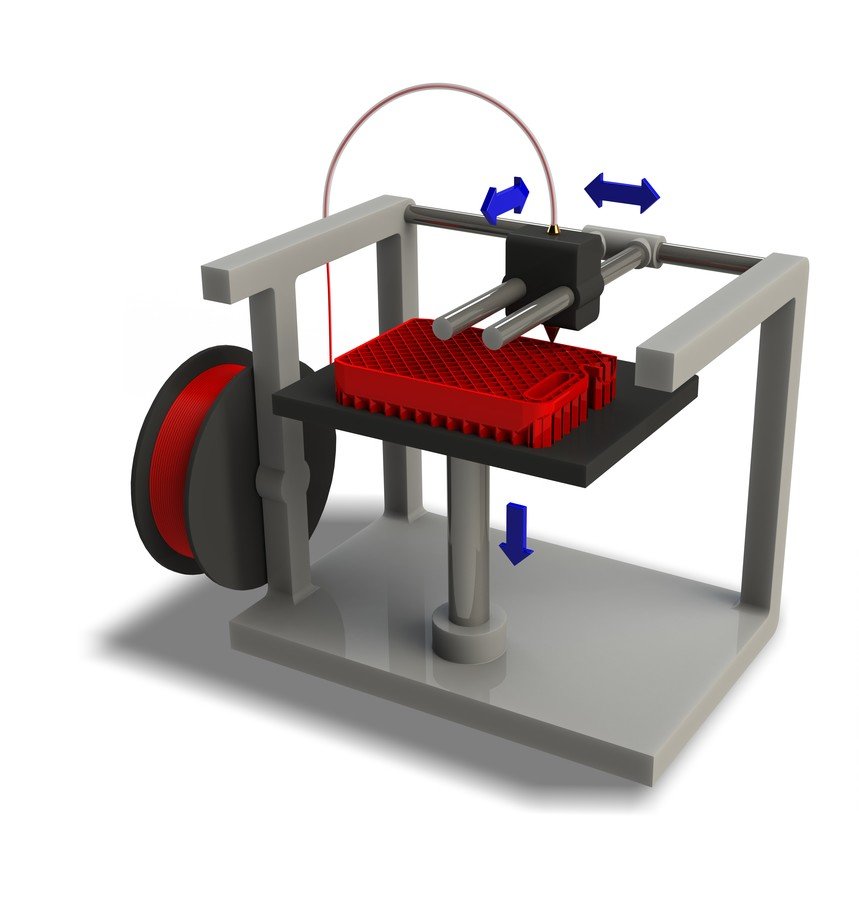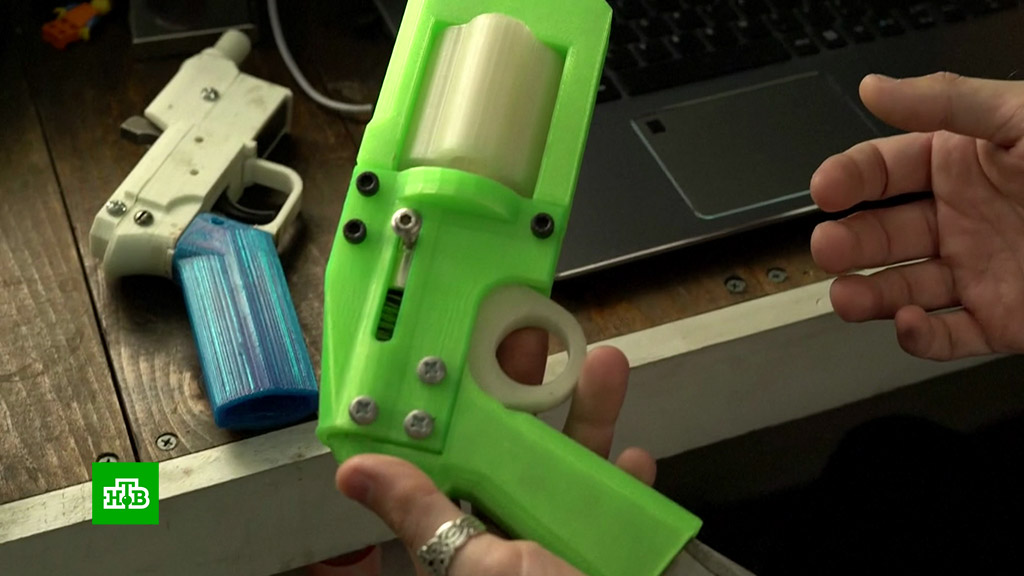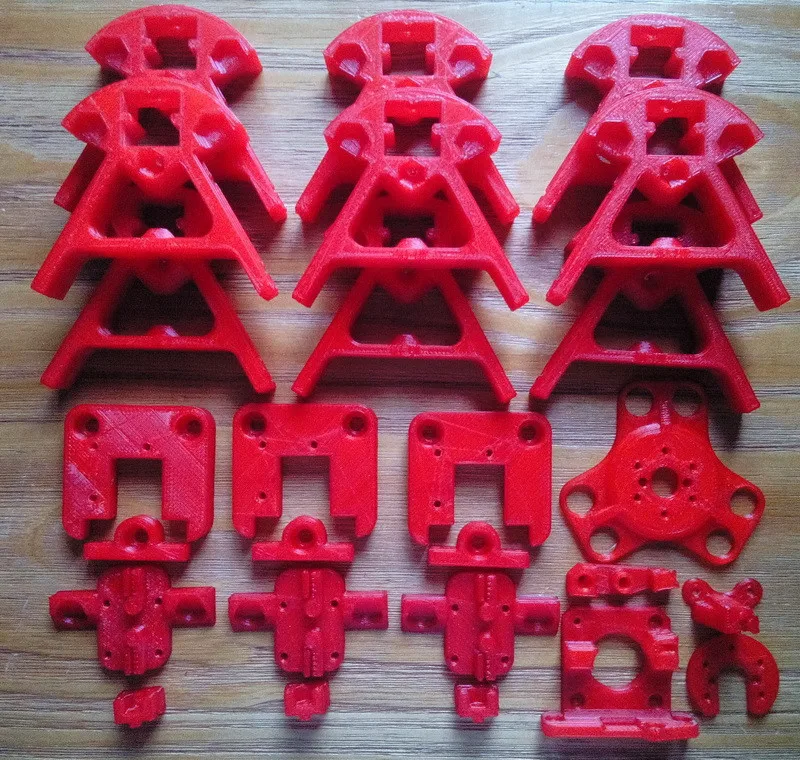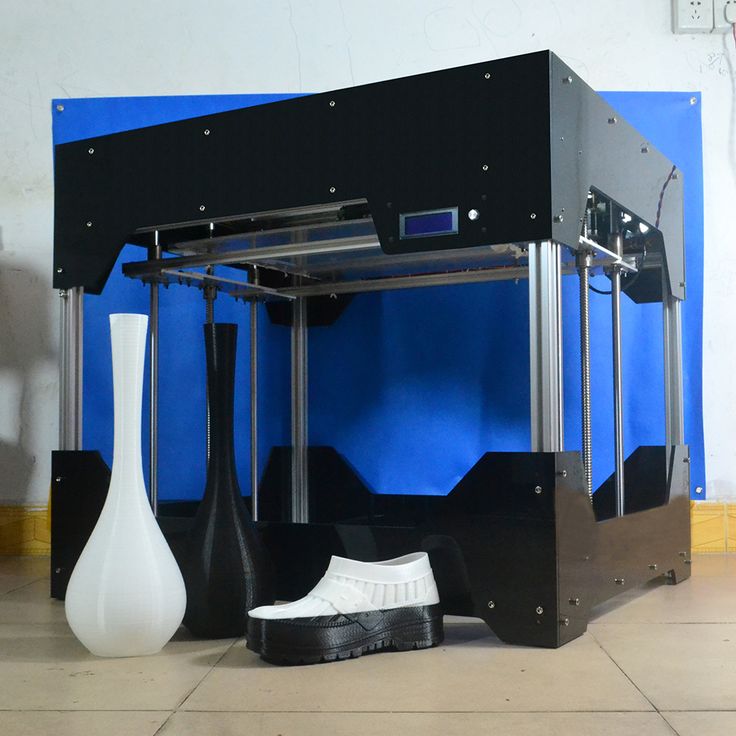3D print your penis
3D Penis Printing
3D Penis PrintingClone, Generate and Enjoy!
3D Penis PrintingThere's been some hype in the media lately about using 3D printers to make exact copies of men's private parts (e.g. Neighbors 2014 with Zac Efron and Seth Rogan, Jan 2013 Time Magazine, 3Dea - the future of dildos), but what's the real story? Can any man, using today’s technology, actually PRINT out an exact copy of his own penis, or is he better off using the sex industry standard Clone A Willy kit?
We examined this question in detail and concluded that, despite all the media hype and technological advances with modern 3D printers, in order to get a true to life, actual size and shape, highly detailed, usable copy of your own penis, the ubiquitous Clone A Willy kit is still the way to go. Getting a comparable result through 3D printing is still a few years away.
3D Printers decidedly entered the mainstream in 2012, when the concept of a regular person printing out a product from home rather than buying it from a store actually became a legitimate reality. 3D printers work by taking a digital design and building a product from it, one layer at a time. In the case of copying a penis, a digital scan or series of images is taken of the penis and uploaded onto a computer. 3-dimensional imaging software is then used to create a complete 3D digital image of it, and that image is then printed out in layers on a 3D printer. Today's 3D printers are typically filled with an epoxy or plastic filament, and they actually form products by printing in thin layers, one at a time, and building upwards. Think of the ink in your printer cartridge, only it's not filled with ink, it's filled with a plastic or epoxy resin such as an ABS or PLA. When you hit print, it actually prints out tiny resin particles, layering each consecutive page on top of the previous one.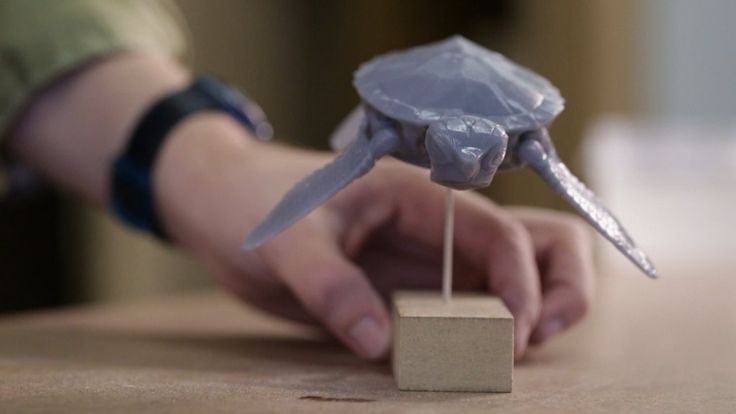 The printing material allows each layer to bond with the layer underneath, until the complete 3D product is formed.
The printing material allows each layer to bond with the layer underneath, until the complete 3D product is formed.
Speed and the absence of messy mixing and pouring are the obvious benefits to using a 3D printer over a Penis molding kit. No need to mix up an algae + water solution and hold an erection for 60-90 seconds to create a mold. All that’s required on the model’s part is to hold his erection long enough for a short video imaging session. Everything else is done on computer. Easy… no fuss, no muss, right?
Drawbacks To Using A 3D Printer To Copy A PenisIn reality, in order to pull off the above you'll need an impressive camera that can scan in three dimensions and create a virtual model of any object, or CAD/CAM software with a compatible camera, the know-how to use it, and a very expensive 3D printer. The $1,000 consumer grade printers simply won’t cut it, as the printable output size is typically too small to print anything other than a micro penis.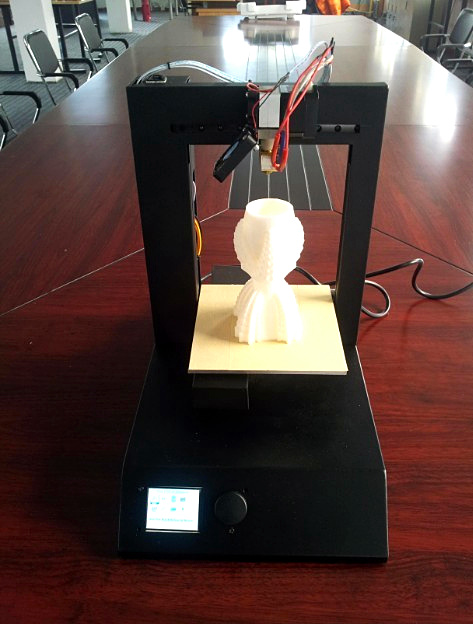 You can hire a service where all the above is taken care of (see http://cloneawilly.com/blogs/news/10784637-how-to-make-a-copy-of-a-penis or www.3dea.com), but this requires traveling to a location away from home and allowing a technician take images of your erection. If you’re not a porn star or somewhat of an exhibitionist, this could get uncomfortable. The benefit to this method, though, is that these companies will take care of all the rest. The cost is around $250, and it'll take just a day to see your result. What you’ll get is a plastic copy of your manhood, basically true to size and shape, including some detail but not the tiny veins and ridges and things that make your penis so unique. Constituent plastic filaments are still going to be visible in the final piece, meaning the printed object isn’t totally smooth. Its rough texture would not only be uncomfortable if used internally, but it'll also have small crevices in it that could support bacterial growth. Additionally, if you're looking for a usable dildo, an object created from a 3D printer isn't going to be body-safe.
You can hire a service where all the above is taken care of (see http://cloneawilly.com/blogs/news/10784637-how-to-make-a-copy-of-a-penis or www.3dea.com), but this requires traveling to a location away from home and allowing a technician take images of your erection. If you’re not a porn star or somewhat of an exhibitionist, this could get uncomfortable. The benefit to this method, though, is that these companies will take care of all the rest. The cost is around $250, and it'll take just a day to see your result. What you’ll get is a plastic copy of your manhood, basically true to size and shape, including some detail but not the tiny veins and ridges and things that make your penis so unique. Constituent plastic filaments are still going to be visible in the final piece, meaning the printed object isn’t totally smooth. Its rough texture would not only be uncomfortable if used internally, but it'll also have small crevices in it that could support bacterial growth. Additionally, if you're looking for a usable dildo, an object created from a 3D printer isn't going to be body-safe.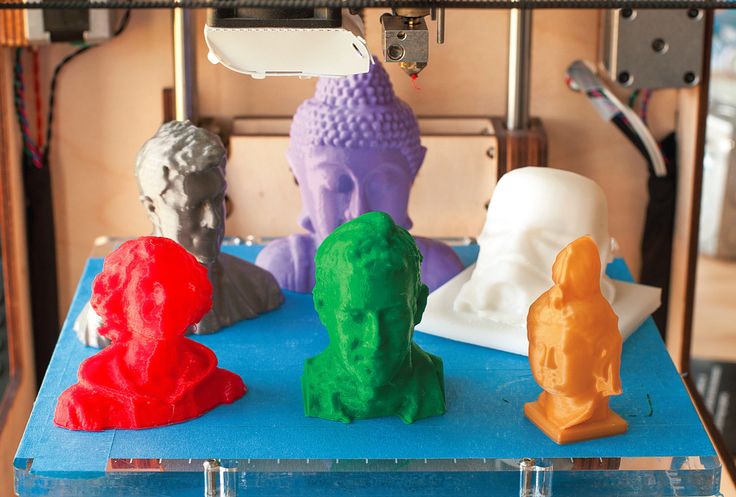 For that, they’ll (or you’ll) need to send your copy away to have a mold created from it. That mold is then filled with silicone or some other body-safe material, left to cure, and sent back to you.
For that, they’ll (or you’ll) need to send your copy away to have a mold created from it. That mold is then filled with silicone or some other body-safe material, left to cure, and sent back to you.
Viola… your finished, usable copy is then complete. The result is pretty good, but not as intricate as something you’d get from a direct mold and cast process. Using a camera to catch every small detail is just not as precise as forming a mold directly from the actual body part.
ConclusionOur recommendation? Stick with an actual Penis kit for now. Some companies that make these kits are already offering 3D printing as an alternative, but even they still recommend the more accurate mold and cast process. At this point in time, at least when it comes to making a dildo from your own penis, a printed object is only good as the intermediary, and not as the finished piece. No doubt 3D printing is the wave of the future, but as of now that's still where it lies.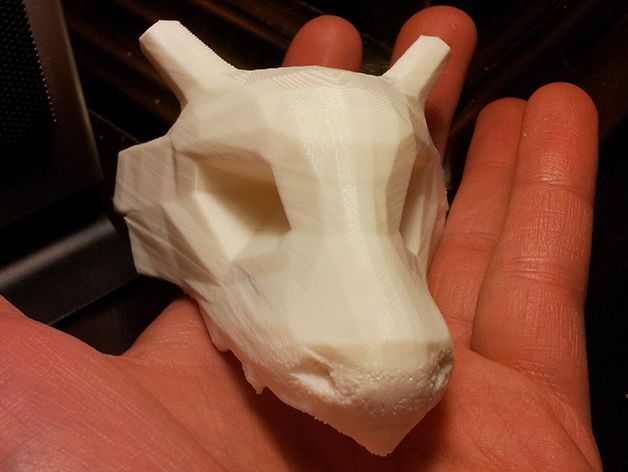 .. in the future.
.. in the future.
Copyright © 3DPenisprinting.com
3d Printed Penis - Etsy.de
Etsy is no longer supporting older versions of your web browser in order to ensure that user data remains secure. Please update to the latest version.
Take full advantage of our site features by enabling JavaScript.
Find something memorable, join a community doing good.
( 300 relevant results, with Ads Sellers looking to grow their business and reach more interested buyers can use Etsy’s advertising platform to promote their items. You’ll see ad results based on factors like relevancy, and the amount sellers pay per click. Learn more. )
Printing organs: how ears, skin and noses are made with a 3D printer
- Natalka Pisnya
- BBC Russian Service, USA
it will help you sort things out.
Image copyright, Masela family archive
Photo caption,Luc Masela with his parents one month after the artificial bladder transplant. year 2001.
Luc Masela, now 27, is an athlete with a degree in economics, works for a major exhibition company, travels a lot and recently met, in his words, "the most beautiful girl in the world." Both she and most of his current friends were extremely surprised when they learned that 17 years ago he survived a dozen and a half operations.
Luke was born with spina bifida - and although he was able to walk, his bladder was severely damaged. By the age of 10, he almost did not leave hospitals: due to improper functioning of the bladder, fluid began to return to the boy's kidneys, doctors diagnosed an irreversible pathology of the organ.
You need JavaScript enabled or a different browser to view this content
Video caption,"3D printed" organs are here
Doctors offered the family two solutions: lifelong dialysis or the creation of a new bladder from a segment of the intestine.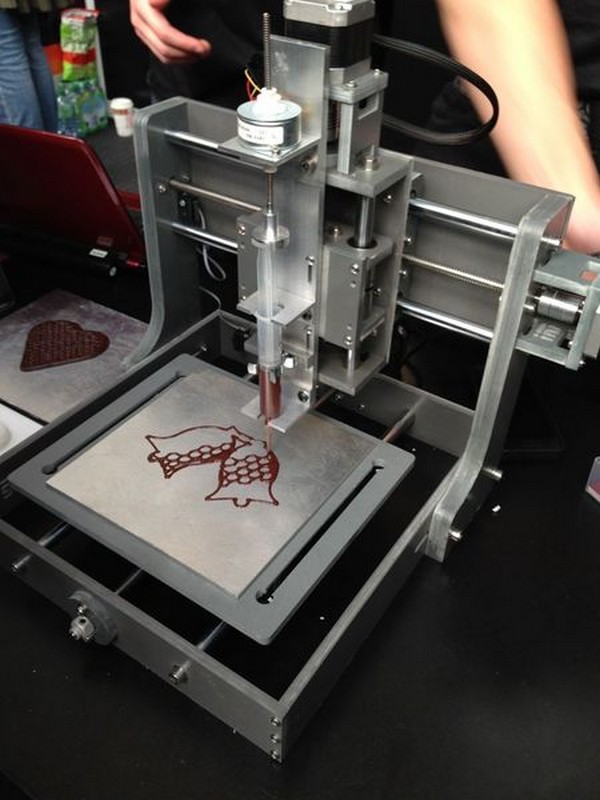 This would guarantee Luke several years of medically supervised life and a high risk of developing cancer.
This would guarantee Luke several years of medically supervised life and a high risk of developing cancer.
The urologist in charge of the boy suggested that Masela's family take part in an experimental program to grow a new bladder from his own cells. Then, in 2001, it sounded like science fiction: only nine people took part in the program before Luke. Despite this, his family agreed.
"The essence of the operation was reduced to two stages: first, a piece of bladder tissue was taken from me, and over the next two months, cells were grown in the laboratory in order to grow a new healthy bladder from them," says Luke.
Photo copyright, Masela family archive
Photo caption,Luc Masela, 17 years after the artificial bladder transplant
Next was the transplant operation, which, according to him, lasted 16 hours. “I opened my eyes and saw a cut through my entire stomach, tubes of all possible sizes were sticking out of me, except for them - four IVs and a bottle-feeding machine,” he recalls.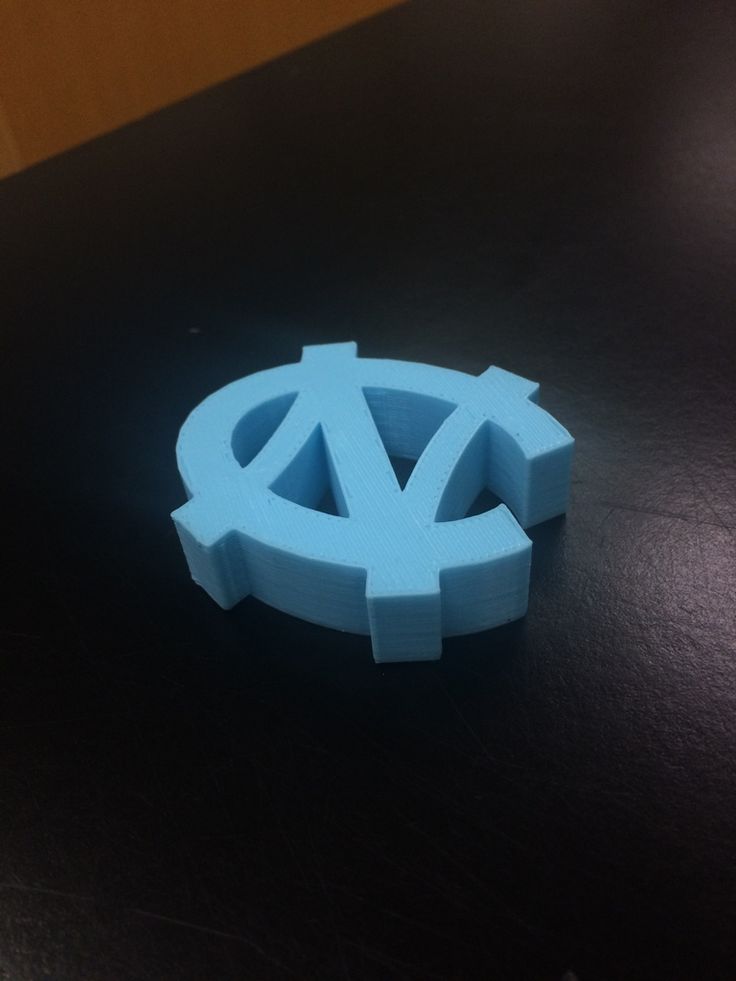 “I stayed in the hospital for another month, I was prescribed bed rest, after that I stayed at home for another month.
“I stayed in the hospital for another month, I was prescribed bed rest, after that I stayed at home for another month.
The operation was performed by Dr. Anthony Atala, Pediatric Regenerative Surgeon. In two months, out of a hundred patient cells, scientists created one and a half billion. Further, an engineering structure was created on a collagen frame: the bladder was “sculpted” like a two-layer pie, the core of which dissolved over time, and it started working like a normal organ, taking root thanks to Luke’s own cells.
- An animal capable of regrowing its head
- The birth of a chimera: why do scientists need a human-animal hybrid?
- Swedish company 3D prints body parts
Luke and Dr. Atala haven't seen each other for 10 years after being discharged from the hospital. Once a dying child became the champion of the school wrestling team and went to college.
The professor took charge of the Wake Forest Institute of Regenerative Medicine in North Carolina in those 10 years, but Luke was never forgotten: his bladder was one of the most challenging and most successful projects in his early practice.
By 2018, Atala won the Christopher Columbus Award for "work on a discovery that will have a significant impact on society"; The Times and Scientific American magazines at various times named him "Physician of the Year", he was also recognized as "one of the 50 scientists on the planet who in the next 10 years will change the way we live and work."
How to print a new face
Skip the Podcast and continue reading.
Podcast
What was that?
We quickly, simply and clearly explain what happened, why it's important and what's next.
episodes
The End of the Story Podcast
In the mid-2000s, Atala's team turned their attention to an ordinary household 3D printer and wrote special software for it, later specialized machines were created for the laboratory. Now the laboratory "grows" up to 30 different types of cells and organs, as well as cartilage and bones.
Now the laboratory "grows" up to 30 different types of cells and organs, as well as cartilage and bones.
One of the team's latest achievements is ears and noses grown outside the human body.
The main customer and sponsor of Atala's developments is the US Department of Defense, and many of the patients are military victims of military operations.
It works like this: first, a CT scan of the ear or nose is done. One of Atala's assistants, Joshua Corpus, jokes that at this stage, people often ask to "improve" the shape of the nose if they thought theirs was too wide or hooked, and the ears if they were too wide.
After that, a special computer code is written, and the printing of the base of the organs begins.
For this, a bioabsorbable polymer, polycaprolactam, is used. At the same time flexible and durable, in the human body it disintegrates within four years.
After printing, the layers of polycaprolactam resemble lace; after transplantation, their place will be taken by a person's own cartilage tissue in a few years after transplantation.
Polycaprolactam is then saturated with a gel created from the patient's cells, cooled to -18 degrees Celsius - so the cells, according to scientists, are not damaged, they are "alive and happy."
Image caption,Printing a test kidney sample on a bioprinter
In order for the polymer and gel structure to take shape and become something more durable, ultraviolet light is used in the laboratory - it does not damage cells.
The future implant is printed for 4-5 hours, then it is finally formed and inserted under the epidermis.
Skin can also be grown: children affected by the fires were the first to participate in the early trials of Atala - after the "printing" of the skin, scientists observed the patients for several more years. The new skin did not crack, did not burst, and grew with the children.
The most difficult job, according to the scientist, is facial wounds: it’s not enough just to stretch the skin, you need to accurately calculate the geometry, align swelling, bone structure, and understand how a person will look after that.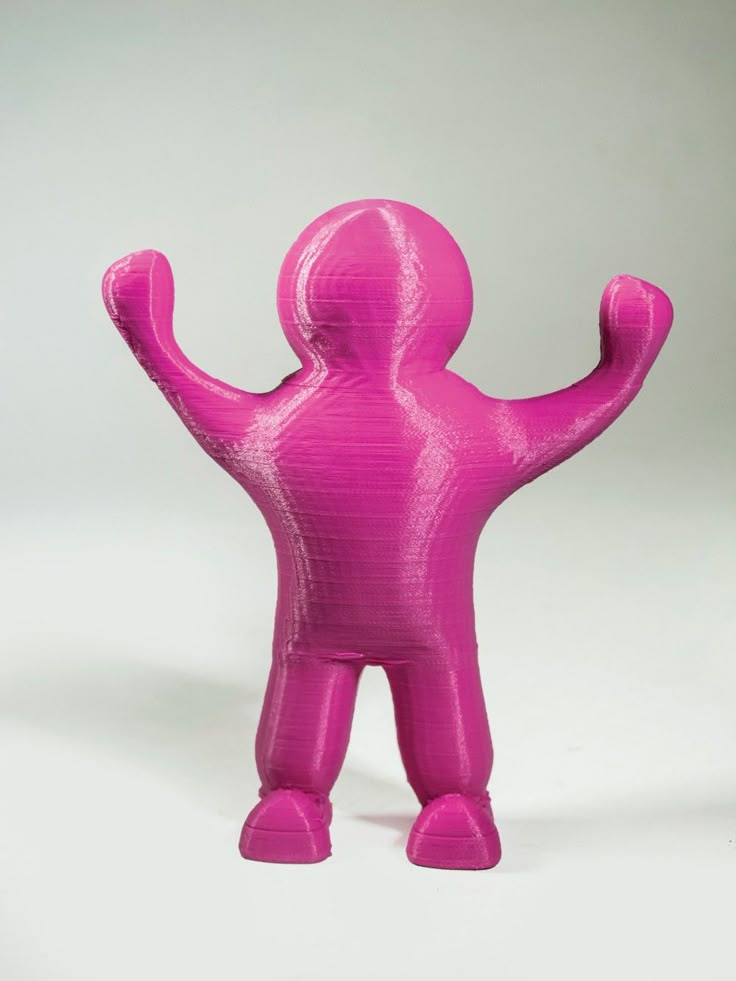
In addition to the skin and ears, Atala can "print" the bones of the jaws, grow blood vessels and cells of some organs - the liver, kidneys, lungs.
This technology is especially appreciated by oncologists: on the basis of patient cells, it is possible to recreate the body's response to various types of chemotherapy and observe the reaction to a particular type of treatment in the laboratory, and not on a living person.
But the liver, kidneys, lungs and heart are still being tested. Atala says he raised them in miniature, but creating organs from various tissues to real size requires a lot of additional research.
But, according to him, cells were grown in the laboratory and a vagina was created for a girl who was born several years ago with a congenital deformity of the genital organs - several years have passed since the transplant.
Image caption,Bioprinted polycaprolactam ear implant base
Atala smiles and adds that his team is also working on a working penis. This research has been going on for several years, and the most troublesome for scientists is the complex structure of tissues and the specific sensitivity of the organ itself.
This research has been going on for several years, and the most troublesome for scientists is the complex structure of tissues and the specific sensitivity of the organ itself.
Among others, Igor Vasyutin, a Russian post-graduate student of the First Moscow State Medical University (MGMU) named after Sechenov, is working on this under laboratory conditions. He is a cell biologist, Atala's right hand.
Vasyutin has been in the USA for about a year - he came on an exchange. He is ready to talk about the behavior of stem cells for hours, but becomes less verbose when it comes to Russian science.
Vasyutin's alma mater has not reached mass regeneration of human organs and is still training on animals: local scientists "printed" a mouse thyroid gland on a 3D printer.
However, they are also involved in the study of human organs. According to the head of the Institute of Regenerative Medicine at MSMU Denis Butnar, several years ago the Institute recreated a special engineering design of the buccal mucosa.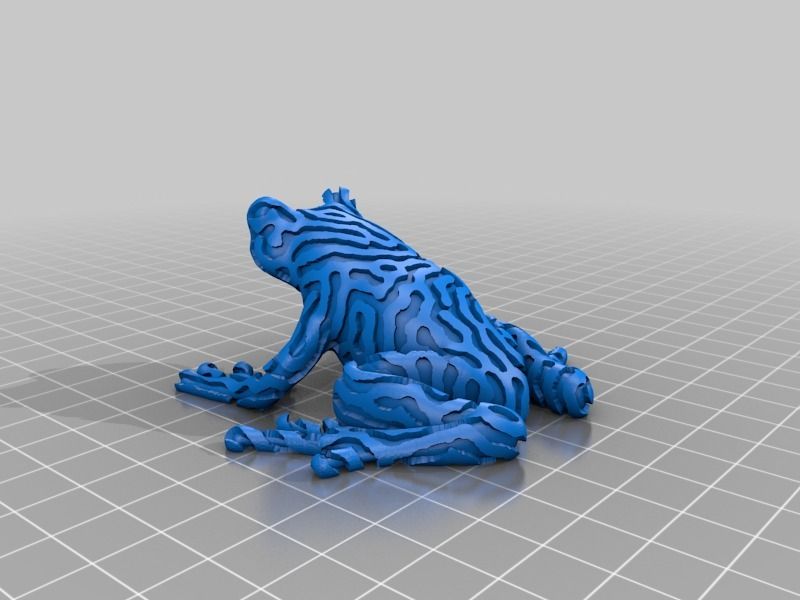 She functioned perfectly for the first six months, but subsequently had to undergo a second operation.
She functioned perfectly for the first six months, but subsequently had to undergo a second operation.
Test specimen of an ear implant exposed to ultraviolet light
In Russia, however, over the past few years, the Italian surgeon-transplantologist Paolo Macchiarini has been practicing - the man who was the first in history to perform an operation on transplanting a synthetic organ - a plastic tube that replaced the patient trachea.
- Paolo Macchiarini: the rise and fall of the famous surgeon
However, seven of his nine patients died, and the breathing tubes implanted in the remaining two subsequently had to be replaced with donor ones.
Several criminal cases were brought against him, including on charges of pressure on patients and fraud, and the world's leading doctors called Macchiarini's operations "ethical Chernobyl."
Will printed organs replace donors?
At the zenith of his career, Macchiarini argued that a new perspective is opening up for humanity: you can "print" any human organ on a printer, create an engineering structure from it, enriched with the patient's stem cells, and get the perfect prosthesis.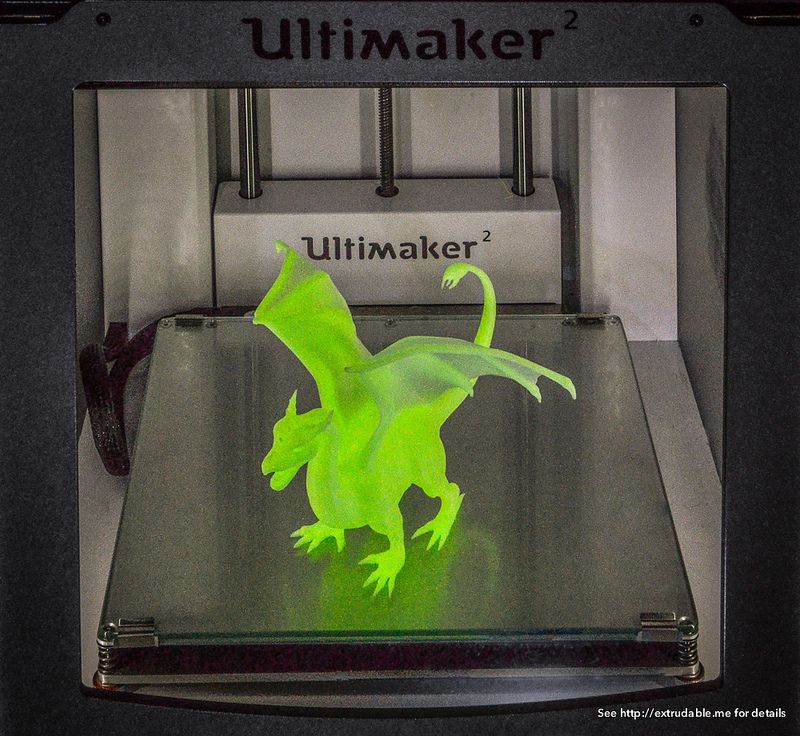
Be that as it may, complex human organs - the liver, kidneys, heart, lungs - have not yet been grown by any regenerative surgeon.
Bioprinting of the so-called simple organs, however, is already available in the USA, Sweden, Spain and Israel - at the level of clinical trials and special programs.
The US government is actively investing in such programs - in addition to Wake Forest, cooperating with the Pentagon, the Massachusetts Institute of Technology also receives significant amounts to recreate the functioning of the liver, heart and lungs.
Image caption,Skin application test on a burnt wound
According to Professor Jorge Raquela, a gastroenterologist at the Mayo Clinic Research Center, "Bioprinting is one of the most exciting branches of modern medicine, it has huge potential, and the turning point of the most important discoveries is already close."
Meanwhile, Pete Basillier, head of R&D at analytics firm Gartner, insists technology is advancing much faster than understanding the implications of 3D printing.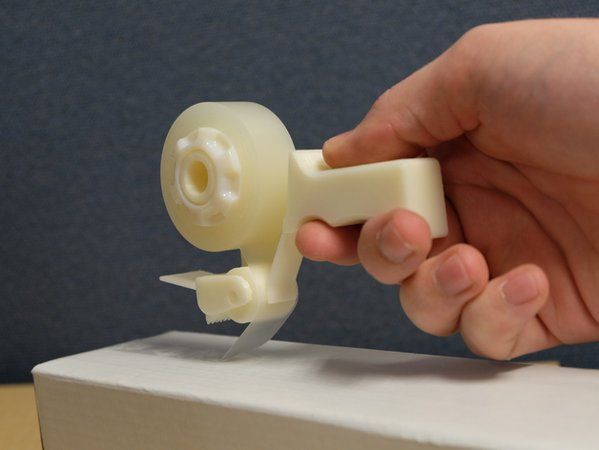
Such developments, according to Basilière, even if created with the best of intentions, give rise to a set of questions: what will happen when "improved" organs are created, the basis of which will not only be human cells - will they have "superpowers"? Will a regulatory body be created to monitor their production? Who will check the quality of these organs?
More than 150,000 Americans are on the waiting list for organ transplants every year, according to a report from the US National Library of Medicine. Donor organs will receive only 18% of them; every day in the United States, without waiting for a transplant, 25 people die. Organ transplants and subsequent rehabilitation cost insurance companies and patients $300 billion in 2012 alone.
- A 3D printer helped a cyclist who lost his jaw
- Genetically modified pigs - human organ donors?
- The world's first child who received both hands transplanted plays baseball
Most Americans are potential donors: upon obtaining a driver's license, they voluntarily answer the question of whether they agree to donate their organs in the event of a car accident or other dangerous incident .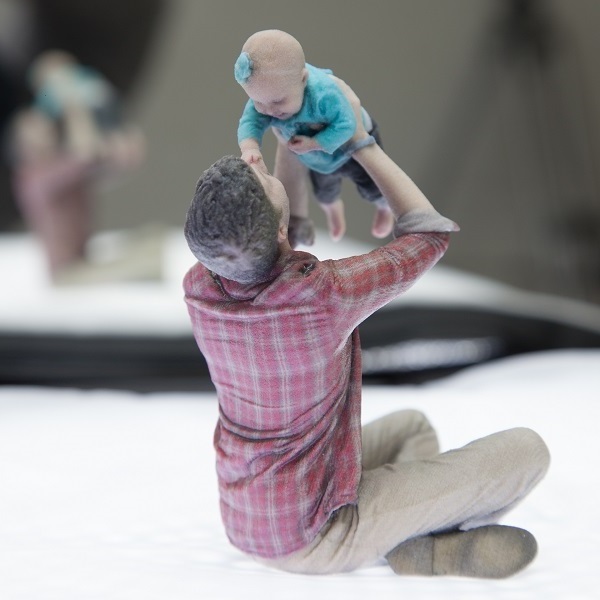 In case of consent, a small "heart" and the word "donor" appear in the corner of the document.
In case of consent, a small "heart" and the word "donor" appear in the corner of the document.
Professor Atala's driver's license is the same - despite all his achievements and faith in the press, he is ready to share his with others.
Neither the professor himself, nor his subordinates hide the fact that science is not yet able to "print" organs for thousands of those who need transplantation right now. According to him, it will take several decades to replace donor organs with grown ones at the mass market level.
The work of Atala and others in the field of regenerative medicine remains more probing than mainstream, and still tailored to the individual patient.
FAQ・Cults
What is 3D printing?
This is a 3D printing process that creates a real object from a 3D digital file. There are several ways to achieve this goal, all based on depositing and solidifying the material layer by layer.
How to print in 3D?
3D printing is very easy.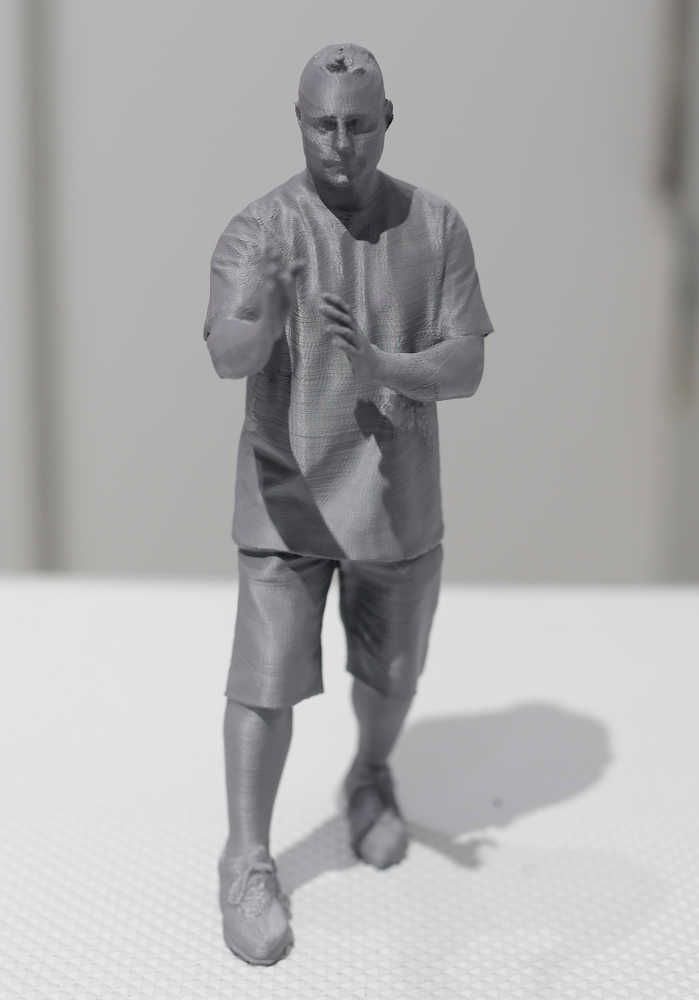 Just download the digital model for 3D printing (for example, on Cults). Typically, a 3D file is in the .STL or .OBJ format. When you restore the file to your computer, you must import it into your 3D printer software called a cutter. You enter into the cutter all the necessary settings for preparing the print (size, temperature, infill, etc.). When your 3D model is ready, you just need to convert it to gCode from your cutter. You will then place the gCode on an SD card or USB drive to connect it to your 3D printer and start 3D printing. You can also use our Maker Tools which lists all the necessary 3D printing software.
Just download the digital model for 3D printing (for example, on Cults). Typically, a 3D file is in the .STL or .OBJ format. When you restore the file to your computer, you must import it into your 3D printer software called a cutter. You enter into the cutter all the necessary settings for preparing the print (size, temperature, infill, etc.). When your 3D model is ready, you just need to convert it to gCode from your cutter. You will then place the gCode on an SD card or USB drive to connect it to your 3D printer and start 3D printing. You can also use our Maker Tools which lists all the necessary 3D printing software.
What is an STL file?
An STL file is a common file format for 3D printing. It stands for Stereolithography and was invented in the 1980s by one of the founders of the 3D system. An STL file for a 3D printer allows you to create mosaics from triangles. These triangles share edges, which means that the machine can know their location and location. This format does not include information about color, texture, or other common CAD model parameters. You can also use the OBJ format for 3D printing. You can learn about different formats of 3D printable files here.
You can also use the OBJ format for 3D printing. You can learn about different formats of 3D printable files here.
How to create a 3D model?
To model an object in 3D, you need special 3D software. The software should also allow you to export your creation to a 3D printable format such as STL or OBJ. There are several solutions for creating 3D files, but if you are a beginner, we recommend the free online 3D modeling software Tinkercad. Depending on your level, you can use more professional software such as ZBrush, Solidworks or Blender. A complete list of 3D modeling software can be found in this article which lists the best 3D modeling software. You can also use our Maker Tools which lists all the necessary 3D printing software.
Can I print in color?
Some 3D printers can print in color. In this case, the information must be reported in a 3D file. The cheapest printers so far only print in one color.
What material can I print?
It depends on your 3D printer, the most common material is plastic (ABS or PLA), but you can print metal, silver or wood.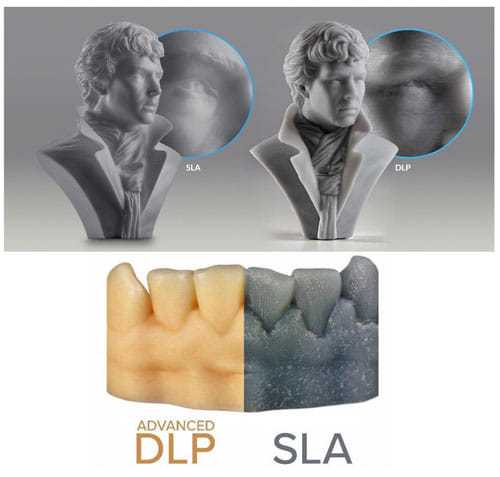 For more information, you can read our article 3D Printing: An Introduction to Various Technologies.
For more information, you can read our article 3D Printing: An Introduction to Various Technologies.
What is the maximum size of an object??
Again, this depends on your 3D printer. More precisely, it depends on the size of its printing plate.
What is 3D streaming?
This is a process where models are sent directly to the 3D printer without having to download them first. It is a solution that offers the ability to secure and control the exchange of 3D files.
How to fix 3D printing problems?
Personal 3D printers are still at the stage where not all 3D printed objects come out right the first time. You will have to do this several times, and start printing again and again, changing some parameters. It is learning and knowledge that will be gained over time. The more you create in 3D, the more you will know your 3D printer and create more and more successful objects. We have listed an entire guide to Cults that will allow you to troubleshoot and fix 3D printing problems.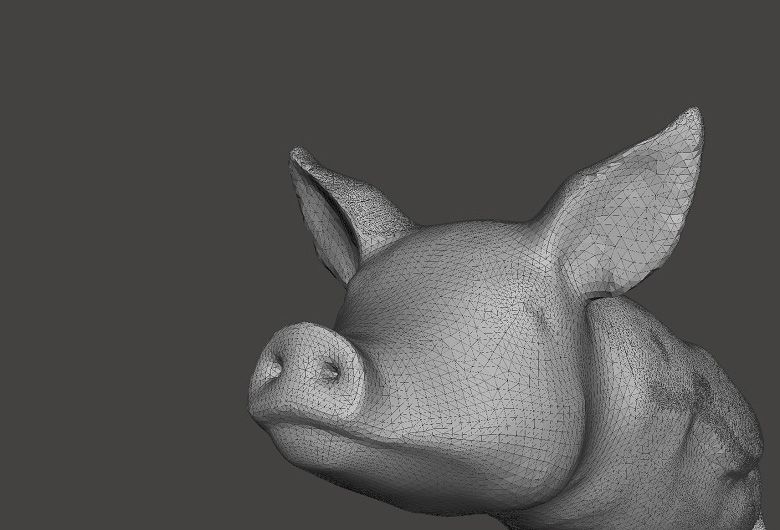 A very good document for all beginners! You can also view our Maker Tools which lists all the necessary 3D printing software.
A very good document for all beginners! You can also view our Maker Tools which lists all the necessary 3D printing software.
How do you recycle your 3D prints?
As we all know, 3D printing can take a long time from now on and take over all your drawers and cabinets quickly! This is a very good sign because it means you are fully using your 3D printer. To make the most of this, we have listed a few tips that will allow you to reuse items. For example, in this article we explain how to recycle or reuse your empty fiber spools and in this article we explain how to recycle or reuse your failed prints. Useful and original tips that will make your hobby 100% enjoyable!
Is 3D printing compatible with food contact?
This concern is often expressed in the manufacturing community. Indeed, some fibers are not recommended for use in foods. But today there are many harmless materials that can be eaten or drunk. For example, PLA filament, RepRap PP or PETG plastic.
How do I join the community and sign up for Cults?
Create an account by clicking Community. By filling out a short form, you will officially become a Cults user. Alternatively, you can also go to this page https://cults3d.com/en/polzovateli/vhod and enter your email address, username and password, or use one of the social network login buttons.
How do I upload my 3D models to Cults?
To upload one or more of your 3D files, simply click the Upload button in the upper left corner of the horizontal menu. After that, you will be taken to this page: https://cults3d.com/ru/zagruzhat. Then you will need to click on the "Add 3D Model" block. If you are not yet registered on the platform, you will need to create an account, otherwise you will just need to log into your Cults account. Then you only need to fill out a form with the name of your creation, its description, 3D files, images, etc. Then on the second page, you will need to select the price and license applicable to your 3D model.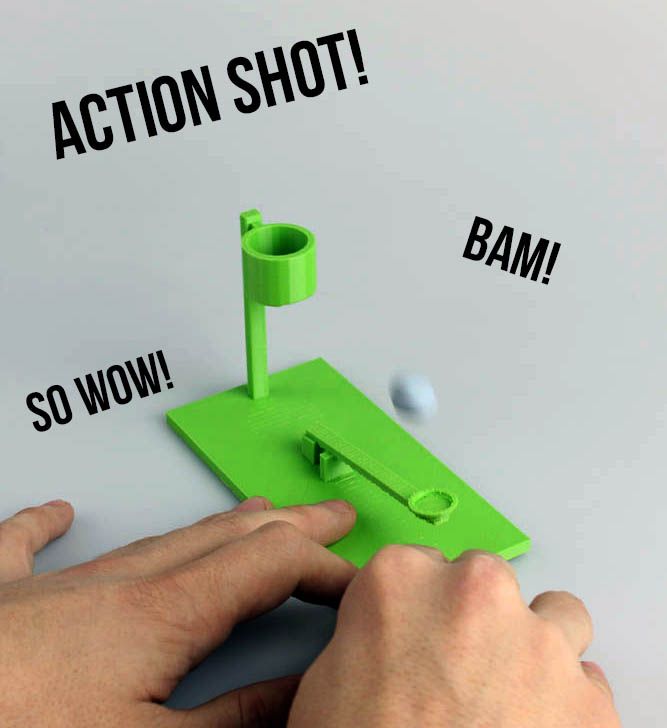 When all these steps are completed, your creation will be online! If you're still undecided about publishing your models on Cults, feel free to read this article Why publish your designs on Cults? List of advantages and benefits to get an idea.
When all these steps are completed, your creation will be online! If you're still undecided about publishing your models on Cults, feel free to read this article Why publish your designs on Cults? List of advantages and benefits to get an idea.
How can I share my Makes (photographs of 3D printed objects) on Cults?
To share photos of your 3D prints made from files uploaded to Cults, simply click the Upload button in the upper left corner of the horizontal menu. After that, you will be taken to this page: https://cults3d.com/ru/zagruzhat. Then you will need to click on the "Add brand" block. If you are not yet registered on the platform, you will need to create an account, otherwise you will just need to log into your Cults account. Then you only need to fill out the form by first selecting the appropriate 3D file from the drop-down menu, a description of your 3D print, settings used, photos, etc. When all these steps are completed, your make will be online!
How can I download 3D files?
Downloading some STL files is very easy. You just need to click on the purple "Download" button in the top right corner of each page of creations. Then click the "Upload Files" button on the last page. Your downloads will start after clicking on "Download Files" and will appear in a special download folder defined by your internet browser. Please note that you must be logged into your Cults account before doing so, or register if you are a new member.
You just need to click on the purple "Download" button in the top right corner of each page of creations. Then click the "Upload Files" button on the last page. Your downloads will start after clicking on "Download Files" and will appear in a special download folder defined by your internet browser. Please note that you must be logged into your Cults account before doing so, or register if you are a new member.
How to buy 3D files for 3D printing?
To buy 3D files, you just need to click the purple "Download" button in the upper right corner of each page of creations. Then you need to go to the shopping cart and confirm it by clicking the purple "Proceed to download" button. And choose your favorite payment method. You can choose to pay by credit card or PayPal. Finally, on the last page, click the Upload Files button. Please note that you must first log into your Cults account or register if you are a new member.
How can I find downloaded files?
It is very easy to download the file you have already downloaded. Connect to Cults with your login, go to your personal account to see all your orders: https://cults3d.com/ru/zakazy. Click the purple Download button on each row on the right side of the page and download your ZIP files by clicking the Get Your Models button.
Connect to Cults with your login, go to your personal account to see all your orders: https://cults3d.com/ru/zakazy. Click the purple Download button on each row on the right side of the page and download your ZIP files by clicking the Get Your Models button.
How can I create a collection on the site from my designs or my favorite designs?
- To create a collection, simply click on the "New Collection" button on this page, and then click on the "Add to" button located below the "Upload" button on each design page you wish to add to the collection. You can also create a collection directly from the suggested options after clicking the "Add to" button by selecting the "New Collection" option.
- To remove a design from a collection, you can uncheck the collection from the drop-down menu after clicking the "Add to" button.
- By clicking on the three small dots of each collection you have created, you can select:
- switch the collection to "private" mode: it will be visible only to you in your personal account
- or share it in "public" mode: then it will be visible to everyone and available in the "Community Collections" section and on your Cults profile in the "Collections" tab.

- If you're a designer and want to organize a lot of your work on your profile, it's very easy. Just create a public collection, but choose only your own designs. This way, your themed "Featured" designs will appear right above your designs on your profile, in the "3D Models" tab. They will also appear in the Community Collections section, on your Cults profile under the Collections tab, and of course in your personal account.
- Collections are displayed in chronological order of creation.
How do I organize my collections?
It's quite simple. You can go to your Design Collection Page, click on the three-dot menu, and select the Climb option. This will move your collection higher in your listing.
How to save creations on the site?
It's very easy to save a 3D file for later use. Just click on the "Add to" button below the "Upload" button. You can then click on the "Collection" you want or create a "New Collection".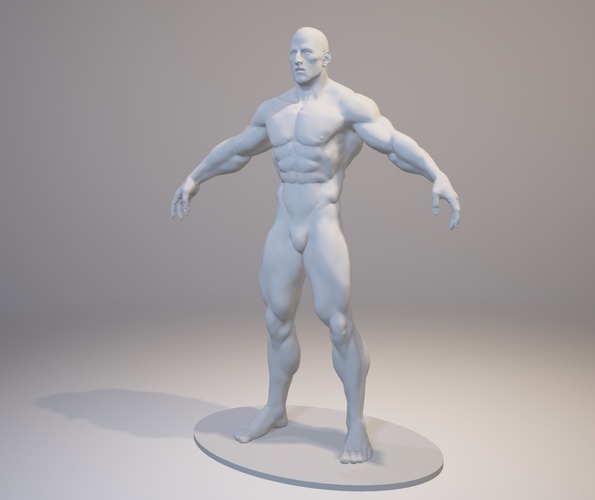 After that, you can find all the saved files in the collection in your personal account. To cancel saving, you can simply click on the "Add to" button again and uncheck the collection where the design is already saved.
After that, you can find all the saved files in the collection in your personal account. To cancel saving, you can simply click on the "Add to" button again and uncheck the collection where the design is already saved.
What if I don't have a 3D printer?
With Cults you can get a 3D printed object even if you don't have a 3D printer. It is very easy to do this. Select the desired 3D model, upload it and at the end of the upload process you will be able to select the "Compare Craftcloud 3D Printing Prices" option. This will give you the opportunity to get multiple quotes based on the materials you choose; then order professional 3D printing and have it delivered to your home.
You can also check out our list of online 3D printing services here to choose the right 3D printer for you.
How do I edit my profile?
To change your username or profile picture, or edit your entire profile, you can go to your personal account at this address: https://cults3d.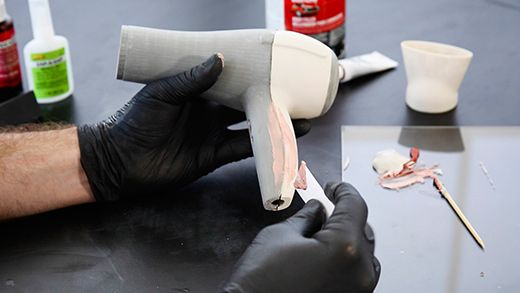 com/en/profil/redaktirovat and edit the relevant fields.
com/en/profil/redaktirovat and edit the relevant fields.
How do I change my account URL?
Your URL was chosen based on your alias, unfortunately it is not possible to change it at this time.
What if I forgot my password?
In the login form you can request a new one by e-mail. If you have forgotten your email, there is nothing we can do for you.
How to become a seller?
By default, your account is configured as a community member. When you upload your first creation, you are officially a Cults seller. To do this, just click "Download" (yes, we thought of everything).
How to get money from sales?
To withdraw money, go to your personal account in the Sales section. Payment threshold is 10 € . Transfers are made manually via PayPal after you have activated the "Request Payment" button located in your personal account.
What if I don't have PayPal access to earn money from sales?
PayPal is restricted in some countries.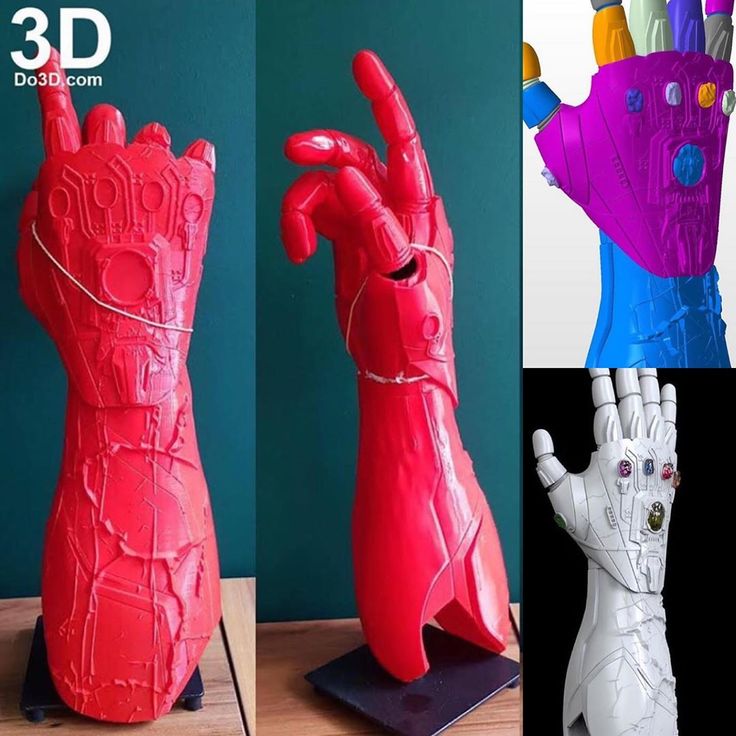 In addition, in exceptional cases, we may use an alternative payment method to send you money from your sales. Alternatively, we use the Payoneer solution. In order to get a refund on your sales through Payoneer, you must register with Payoneer and make a Payoneer "Request for Payment" sent to [email protected]. This payment request must match the exact amount of your unlisted threshold or it will be rejected. The minimum threshold at which Payoneer will be able to send a "payment request" is 300 euros.
In addition, in exceptional cases, we may use an alternative payment method to send you money from your sales. Alternatively, we use the Payoneer solution. In order to get a refund on your sales through Payoneer, you must register with Payoneer and make a Payoneer "Request for Payment" sent to [email protected]. This payment request must match the exact amount of your unlisted threshold or it will be rejected. The minimum threshold at which Payoneer will be able to send a "payment request" is 300 euros.
How can I increase the popularity of my 3D models?
Do you want to make your creations more visible? Check out our Cults tips to increase downloads and sales of your 3D files. By following these tips, you will definitely reach the maximum number of people who will be interested in your creations. To enable you to take full advantage of our platform.
What are the payment methods for purchasing 3D files?
Cults offers the option to pay via PayPal or credit card.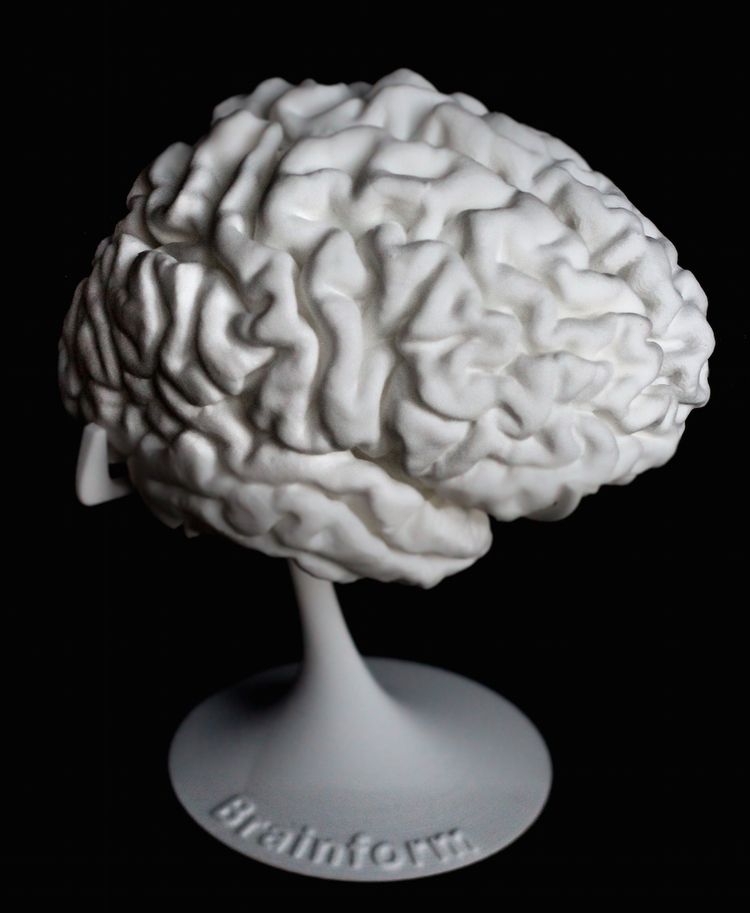 Your purchases are 100% secure. For PayPal, you can pay from your PayPal balance or use your credit card through PayPal. Otherwise, our Stripe online payment system allows you to use your credit card directly. We accept Visa, Mastercard, Maestro, JCB, Discover, American Express, Diners Club International and UnionPay. If you are unable to pay for your purchases online, please contact us via our contact form.
Your purchases are 100% secure. For PayPal, you can pay from your PayPal balance or use your credit card through PayPal. Otherwise, our Stripe online payment system allows you to use your credit card directly. We accept Visa, Mastercard, Maestro, JCB, Discover, American Express, Diners Club International and UnionPay. If you are unable to pay for your purchases online, please contact us via our contact form.
My upload didn't work!
Don't worry, you also received a download link in your email. You can download your files later. All purchased files are also available in your personal account here: https://cults3d.com/en/zakazy, you can download them whenever you want.
Why do I get a message that the 3D file is corrupted when I unzip the file?
The problem is probably that you haven't installed any 3D software to open the STL file on your computer. When you extract the downloaded ZIP file on your computer (you also need a file extractor), we recommend that you install the free Meshmixer software to open the STL file. You can download Meshmixer here, it's a very good software and it's free. This will allow you to edit and modify the STL in the future. Or you can just open the STL files in your 3D cutter and it will work without any problems.
You can download Meshmixer here, it's a very good software and it's free. This will allow you to edit and modify the STL in the future. Or you can just open the STL files in your 3D cutter and it will work without any problems.
Otherwise, the problem is with the unzipped software. We recommend that you download your order again (for free) here: https://cults3d.com/en/zakazy. Then unzip files downloaded online through this website: https://unzip-online.com/en or use other software such as The Unarchiver.
Finally, another source of the problem could be a connection problem during the download. This means that the file was not loaded correctly. This can happen if the files are large and contain multiple 3D models. So make sure you have a good connection and don't get interrupted during your new trial downloads.
You can also check out our Maker Tools, which lists all the major 3D printing programs, they might be helpful!
How to use the RAR file?
When you unzip your ZIP file, it may also contain a RAR file inside. It is also an archive file (like a ZIP file) that you will need to unzip. To do this, you will need a suitable program capable of unpacking RAR files. You can visit this page: https://cults3d.com/en/stranitsy/maker-toolbox in the "UNZIP/UNRAR" section you will find free software that can be useful for decompressing archives of this type.
It is also an archive file (like a ZIP file) that you will need to unzip. To do this, you will need a suitable program capable of unpacking RAR files. You can visit this page: https://cults3d.com/en/stranitsy/maker-toolbox in the "UNZIP/UNRAR" section you will find free software that can be useful for decompressing archives of this type.
[anchor id = "copyright"] What does the © symbol mean next to creations? Can I sell prints of 3D files?
This means "Copyright". Except where contraindicated, all creations published on CULTS are for private and personal use only. This means that the model or any derivative of the model may not be sold for economic or financial gain. For example, you may not sell a digital model, a derivative or adaptation of that model, and you may not sell prints of the model or trade it unless the designer has given you formal consent.
Thus, only free 3D models with a Creative Common license that allow commercial use are allowed for sale. If you want to sell a printed version of a 3D file, your best bet is to ask the designer directly to see if they give you permission. You can use the comment section under each 3D model to notify the designer, or click "Message" if it's on their Cults profile.
You can use the comment section under each 3D model to notify the designer, or click "Message" if it's on their Cults profile.
Can you print and deliver the goods?
Cults is a platform specialized in 3D modeling, we do not do 3D printing. You can only upload digital 3D files. To order a 3D print, simply upload the STL files of your choice and send those STL files to 3D printers such as Sculptéo, iMaterialise or Shapeways. You send them a 3D file and they give you a quote for 3D printing and shipping to your home. You can also check out our list of online 3D printing services here to choose the right 3D printer for you.
Why are my images purple?
Have you just uploaded a creation and your images are not showing right away? Don't worry, this means that Cults analyzes the image and saves it before publishing. It may take some time (depending on concurrent traffic, disk space, image weight, etc.) but it will be online soon. If it does not work out, you will probably have to redo your image.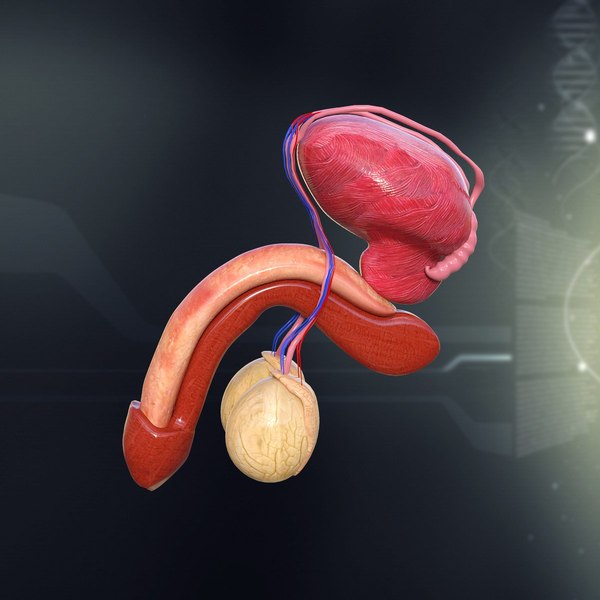 To do this, you can use the utilities listed in our Maker Tools, which will allow you to optimize the weight of your images.
To do this, you can use the utilities listed in our Maker Tools, which will allow you to optimize the weight of your images.
Why are my images misdirected?
The problem is most likely due to the fact that you have blocked the automatic rotation of the phone when taking a photo. To resolve this issue, open the image on your computer and rotate it fully, then save again. Then all you have to do is upload it to your page again and delete the old photo.
I have downloaded a 3D file, but I can't find it on my computer...
The files may be in a different folder on your computer. You can check in your browser's advanced settings where your downloads are located by default.
How can I contact the designer or manufacturer?
Sending a message to a community member is easy. All you have to do is go to his profile, for example by clicking on his/her avatar. When you are on his/her public profile page, you just need to click on the "Message" tab located on the right side of the navigation submenu.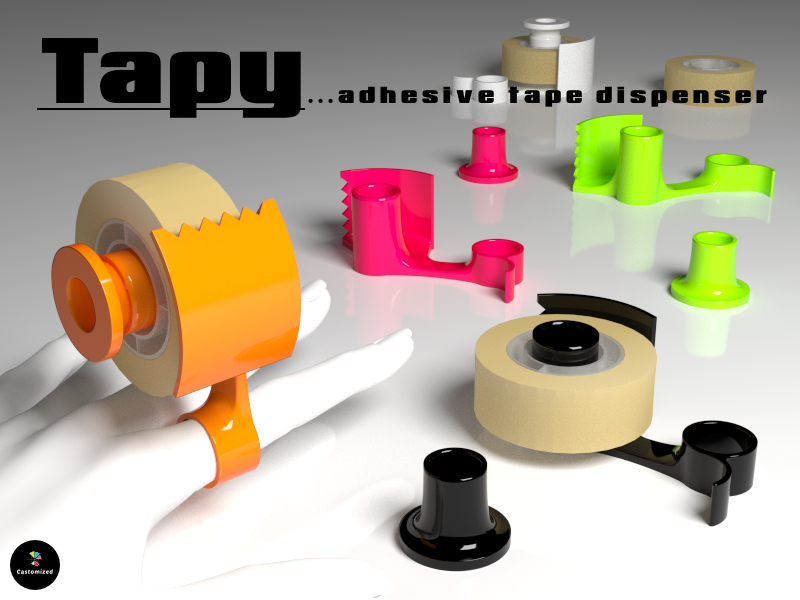 Posts on Cults are not private messages, but a public discussion. It is a place of exchange, thanks to courtesy and respect. Any commercial or malicious calls will be removed. Happy discussion!
Posts on Cults are not private messages, but a public discussion. It is a place of exchange, thanks to courtesy and respect. Any commercial or malicious calls will be removed. Happy discussion!
The 3D file has been updated, do I need to buy the model again to access this new version?
When a 3D file is updated by its designer, anyone who has purchased or downloaded it for free will have access to the new version directly from their personal Cults space. So there is no need to re-purchase it to get the new version. Just go to the Downloads section of your personal account and click the Download button next to the desired order. After that, you can download the latest version.
Why is my file sold at a higher price than I set?
Cults is a French company subject to VAT (Value Added Tax). Therefore, for legal reasons, VAT must be added to the selling price of your creation. Cults is a transparent intermediary, so VAT is calculated only from the platform commission. This VAT applies only to residents of the European Union. If you live outside the European Union, prices will be without VAT. This tax is collected by Cults and paid in full to the government authorities. Cults receive no commission on this tax. For more information, you can refer to the Wikipedia page.
This VAT applies only to residents of the European Union. If you live outside the European Union, prices will be without VAT. This tax is collected by Cults and paid in full to the government authorities. Cults receive no commission on this tax. For more information, you can refer to the Wikipedia page.
What currencies does Cults accept?
On the platform, we can display prices in 24 types of currencies. You can select them in the upper right corner of the site in the purple bar next to the language selection.
Here is the list of currencies available on Cults:
- ARS: Argentine Peso.
- AUD: Australian dollar.
- BGN: Bulgarian lev.
- BRL: Brazilian real.
- CAD: Canadian dollar. CHF
- : Swiss franc.
- CNY: Chinese yuan.
- CZK: Czech crown.
- DKK: Danish crown.
- EUR: euro.
- GBP: British pound.
- HRK: Croatian kuna.
- HUF: Hungarian forint.

- INR: Indian rupee.
- JPY: Japanese yen.
- KRW: Korean won.
- MXN: Mexican peso.
- NOK: Norwegian crown.
- NZD: New Zealand dollar.
- PLN: Polish zloty.
- RON: Romanian leu.
- RUB: Russian ruble.
- SEK: Swedish krona.
- UD: American dollar.
What is "dark mode"?
Dark Mode is a special display that brings you a darker Cults interface. What is it used for? This type of appearance potentially has several benefits: reduced eye fatigue, reduced power consumption and thus battery savings to do something for the planet (technically dark pixels consume less power) and finally improved readability (from an ergonomic point of view , some colors are better seen on a black background). You can set up this display from your personal account here. Please note that the default "Automatic" mode corresponds to the appearance mode you have chosen for your computer, tablet or phone.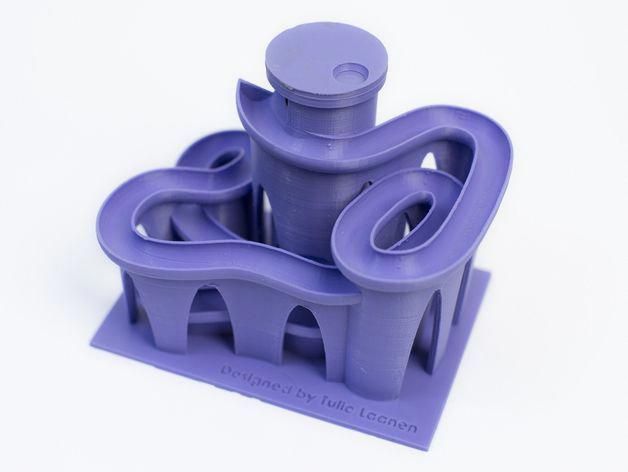
Why do I only see a shadow on my 3D cutter plate?
You just see a shadow because the designer didn't center the model correctly. The design is not aligned with the printed form. Therefore, you need to completely zoom out and return the design to the printing plate. You can set all XYZ position measurements to 0 so that the file appears properly centered on the plate.
How can I get a refund for my order?
In order to receive a refund, you must first contact the seller on their Cults profile via the message page or as a comment on the purchased 3D file page. If the designer agrees to refund your money, he will have to go to the "Sales" section and click on the "Refund" button corresponding to your order. The refund will then be credited directly to the bank account you used to pay for the order within 1-2 business days. You will receive a confirmation email that will confirm the refund.
What is the Cults refund policy?
Our refund policy is as follows:
- The customer may dispute the purchase within 30 days of download.

- The buyer must first contact the seller by posting a message on their Cults profile or leaving a message in the Comments section of the 3D file page.
- If the buyer does not receive a response from the designer within 7 days, or the seller is unable to resolve the issue, the buyer is requested to contact Cults.
- Cults will then take over the case and refund the money if the problem is indeed proven and has not been resolved by the seller. Pursuant to Article L 121-20 of the Consumer Code applicable to digital goods, buyers do not enjoy the right of withdrawal if the digital work is fully consistent with its description and function. The refund policy can be found on this page.
How do I download an invoice related to my order?
The invoice can be downloaded from your personal account on the Downloads tab or directly on the order confirmation page using the "Invoice" button. Before doing so, please complete the various details related to your identity in the Account tab.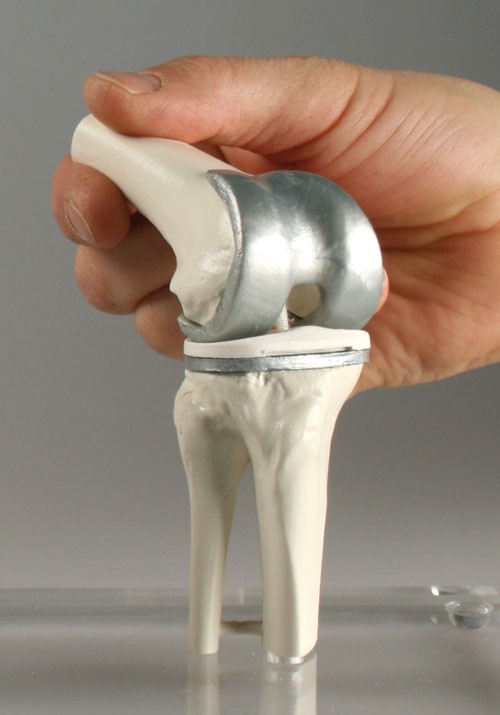 This information will remain private and only visible to you, but is required for the preparation of your invoices.
This information will remain private and only visible to you, but is required for the preparation of your invoices.
How do I publish a design in secret mode?
Secret designs are hidden but visible to everyone you share the link with. This can be useful if, for example, you want to share your design with a specific group of people so that only they can access and download the exclusive design.
To change the visibility of your design:
- Select "Make Secret" from the three-dot menu on the current page or on your template page.
- Select "Make Public" to return to public mode.
- On the Edit Price/License page, you can also select the visibility mode: public, secret, or disabled.
How do I create a promotion on my paid projects?
You can add a percentage discount to the price of your designs by clicking the "Add Discount" button when you are on the pricing page. You can then choose the duration of the promotion, knowing that the maximum duration of the discount is 30 days.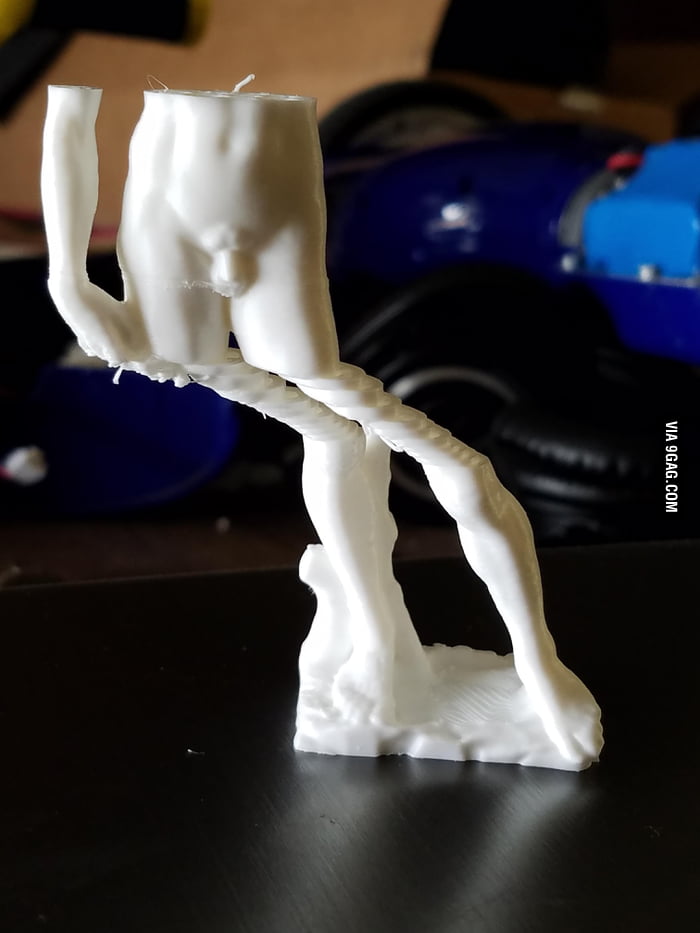 You cannot change the price of a discounted design.
You cannot change the price of a discounted design.
How do I delete one (or more) of my designs?
- Or, go to each page of your designs in the upper right corner and click on the icon depicting 3 small dots, then select the "Deactivate" option.
- Or go to the "Designs" menu in your personal space and click on the "Deactivate" option, accessible through the icon depicting 3 small dots at the end of each line.
Does Cults 3D have an app for smartphones and tablets?
Cults is a website with responsive web design, which means it is readable and accessible on any smartphone or tablet screen. Just go to your device's internet browser and access the platform through your favorite search engine or by typing in the website's URL. To make it easier to access Cults on mobile and tablets, you can create an icon on your home screen to open Cults directly. Here are some manipulations you need to do, it's very simple.
On iPhone:
- Open Safari browser on iPhone or iPad
- Enter URL in the address bar:
https://cults3d. com
com - Click the share icon (square with up arrow)
- Scroll to the right of the newly appeared menu
- Press the button On the main screen
- Give your shortcut a name like "Cults 3D" (as original :))
- Click the Add button in the upper right corner of the screen to save your changes
On Android:
- Open the Google Chrome app
- Enter the URL in the address bar:
https://cults3d.com - Click on the three small dots in the menu at the top right
- Select "Add to Home Screen"
- Give your label a name, such as "Cults 3D" "or My favorite site I love so much!"
- Click "Add" and the Cults shortcut will appear on your home screen.
How can I protect my Cults account?
If you want to further secure your account, you can easily enable two-factor authentication in your account settings. Note that two-factor authentication only works for accounts that sign up with an email address and password; it does not work for accounts using Google, Facebook, Twitter, etc.


